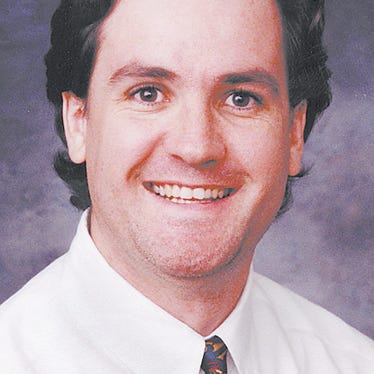
Farmers could actually “sell” their water conservation work to the highest bidder if a viable market for water quality credit trading is set up. Seeking to set up such a market, the USDA’s Natural Resource Conservation Service (NRCS) is soliciting project ideas until a March 2 deadline.
A Jan. 24 Webinar (for more, see here) will help further explain how the program and grants work.
Up to $10 million in Conservation Innovation Grants – which have been around since 2004 and used on some 400 projects -- will be awarded with a cap of $2 million for individual projects. Up to $5 million of the total will go to projects in the Chesapeake Bay watershed.
The proposals will “help us demonstrate and develop water quality trading markets,” said Harris Sherman, head of the NRCS, during a recent press conference. “Our goal is to help build these markets as cost-effective tools to improve water quality in places like the Chesapeake Bay watershed.”
NRCS requests project proposals that:
Support the completion of state water quality market rules and infrastructure needed to carry out water quality trading between point and non-point sources.
Deploy and test tools and metrics needed for crediting and verifying the effectiveness of conservation practices on agricultural lands.
Establish certification, registry and reporting systems.
Educate and reach out to agriculture and other sectors.
The competitive grants will “help to stimulate innovative conservation approaches and technologies. We’re able to leverage federal money with matching funds from our grantees. … There is a minimum of a 50 percent (funding) match that must come from the non-federal entity.”
Sherman said this is the first time the NRCS is using the grants to focus “specifically on water quality trading credits. … It’s important to mention that water resources in the United States continue to face significant challenges caused by development, population growth, pollution, aquifer depletion, climate change and other factors. This adversely impacts the water we drink, the water used to grow our crops, impacts wildlife and fisheries and … recreation.”
On a “voluntary, cooperative basis” farmers can play “an important role in restoring and improving water quality. Through farm bill programs, NRCS and USDA are working extensively with landowners, farmers and ranchers to implement conservation practices on land.”
As an example of how the credits work, Sherman said a waste treatment plant, a power plant or a developer may need to meet specific water quality permits. To do so, they may “reach out to farmers and pay them to help implement conservation practices that would offset the third party’s discharges. Often that offset will (occur) in a more cost-effective way.”
In turn, the farmer must verify that the conservation practices have been implemented and that there are corresponding environmental benefits. These programs, said Sherman “are typically set up and run either by states or third parties as opposed to being run by the federal government.”
Asked for a specific case of such trading, Sherman pointed to the Pacific Northwest where, in a number of rivers, salmon are having trouble reaching spawning grounds due to too-warm water temperatures.
“That’s causing significant problems for fisheries and commercial fishermen. Initially, the state of Oregon and EPA were looking at the possibility of requiring cities and communities along the river to install refrigeration units in their waste treatment plants to cool discharge into the river. That would allow the salmon to swim upstream.”
That was a very expensive proposition for the communities.
However, through “the Conservation Innovation Grant Program and NRCS working with local partners, a proposal was devised to work with farmers upstream of those communities. They’d plant shade trees on each side of the river. Those trees, when mature, will have the effect of cooling the river to a greater extent than the refrigeration units would have.”
The shade tree approach cost a tenth the price of the refrigeration units.
“That’s an obvious win/win situation: the farmers are paid to help solve the problem, the river cooled. … In essence, the farmers provided a ‘credit’ with the shade trees. And there was a buyer – in this case, a city, municipality or factory that otherwise would need to install refrigeration units.”
If such trades can be made on a broader scale “large groups of farmers (could) bundle and sell environmental credits to a group of buyers who need them.” Such transactions would work through a registry “where the credits are certified when bought or sold.”
Such a market “could be a way, particularly in these lean budgetary times, for the government to have additional partners in financing these types of programs. It could reduce non-point source pollution. And it could be a way for farmers to gain additional income.”
Sherman said the USDA and NRCS don’t have a specific formula for determining what the credits will look like.
“These credit systems are largely developed by the states. … It might be a credit for sediment, or for nutrients (like) phosphorus. These are typically decided by states working with farmers and those wanting to buy the credits. There�’s no pat formula, right now.”
The NRCS will focus on grant applications proposing “demonstration projects, projects that create good models, good pilots, which can be replicated and used by other states. Part of what we’re trying to do is spur innovation and get exciting ideas out there that will hopefully be replicated elsewhere.”
As in the fledgling carbon credit market, achieving credibility for water quality credits will rest on the ability to verify and measure claimed benefits.
“We need to demonstrate that the (promised) work is being done and the corresponding results are achieved -- the offsets solution impact,” said Sherman. “Verification is essential to this process.
“We have a challenge taking these programs to scale. We have many good examples of one-on-one relationships where there’s a party that needs a credit and there’s a party that is willing to offer that credit. But to take it to scale to have a true market with a registry where buyers and sellers come together (is a) challenge going forward.
“We need more examples, we need exciting prototypes, and we need to develop models that will resonate in different parts of the country.”
About the Author(s)
You May Also Like






